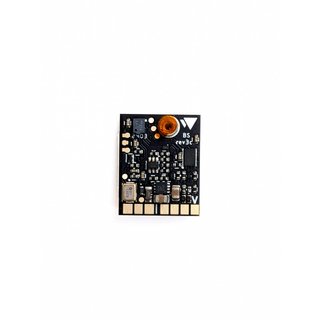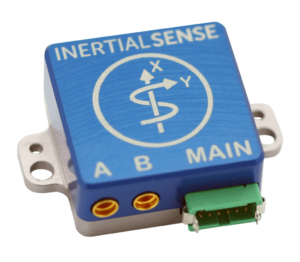SparkNavi Drone Flight Controller and GNSS/INS Made in Taiwan: Precision Navigation for Drones
SparkNavi Drone Flight Controller and GNSS/INS Made in Taiwan: Precision Navigation for Drones
Blog Article
Exploring the Duty of Drone Flight Controllers in Enhancing Flight Stability and Navigating Efficiency
The advancement of drone innovation has dramatically boosted the significance of trip controllers, which serve as the brain of these airborne cars. By integrating real-time information from a selection of sensing units, trip controllers boost flight security and navigation efficiency, making sure that drones can run smoothly also in complex atmospheres.

Comprehending Trip Controllers
Flight controllers are integral components in the functioning of drones, offering as the minds that stabilize and handle flight operations. These advanced gadgets process data from various sensing units, consisting of accelerometers, gyroscopes, and GPS, to ensure that the drone maintains its designated trip path. The flight controller interprets this information and executes commands based on pre-defined algorithms, enabling the drone to reply to environmental modifications, such as wind or obstacles.
The key feature of a flight controller is to maintain stability during flight. It attains this by making real-time changes to the drone's electric motors and control surfaces, making certain balance and control. Furthermore, modern trip controllers integrate sophisticated features such as waypoint navigating, permitting automated flight paths and boosted operational efficiency.
Understanding the design of trip controllers is important for both specialists and hobbyists. As technology developments, trip controllers have actually come to be more capable and compact, integrating man-made intelligence to adapt and boost decision-making processes to complicated trip scenarios.
Secret Elements of Trip Stability
Accomplishing ideal flight security in drones depends on a number of key elements that operate in show to make certain smooth and controlled procedures. Central to this security is the flight controller itself, which refines information from numerous sensors to maintain the preferred trip perspective. This consists of accelerometers and gyroscopes that measure motion and positioning, enabling real-time changes to the drone's position.
Another important part is the digital speed controllers (ESCs), which regulate the power delivered to the motors. By carefully adjusting motor speeds in response to flight controller commands, ESCs aid maintain equilibrium and counteract disturbances brought on by wind or unexpected motions.
In addition, the layout of the drone's frame plays a critical function in flight stability. A well-structured framework reduces vibrations and enhances the general wind resistant account, adding to smoother trip characteristics. The integration of innovative formulas within the trip controller aids in predictive modifications, making sure a versatile and receptive flight experience.
Together, these parts create a natural system that improves a drone's stability, allowing for specific maneuvering and improved efficiency in various trip conditions.
Navigation Performance Methods
Performance in navigating is vital for enhancing drone operations, particularly in intricate atmospheres. Effective navigating methods enhance the capability of drones to go across difficult surfaces and stay clear of barriers, thereby improving functional efficiency and safety and security.
One famous strategy is the application of innovative general practitioners and inertial measurement devices (IMUs) that provide specific area tracking and orientation information. These modern technologies enable drones to calculate optimum trip courses in real-time, taking right into account numerous variables such as wind conditions and possible challenges.
An additional method entails using formulas for course preparation and optimization. Formulas such as A * and Dijkstra's formula can be released to figure out one of the most efficient path while minimizing energy usage and flight time. Additionally, integrating machine discovering versions can allow drones to adaptively pick up from their environments, enhancing navigation capabilities with experience.

Effect on Autonomous Drones
The combination of sophisticated navigating methods has profoundly changed the capacities of independent drones, enabling them to operate with better autonomy and accuracy. SparkNavi drone flight controller and GNSS/INS made in taiwan. These enhancements are mainly credited to innovative trip controllers that utilize real-time information handling and sensor blend, enabling drones to browse intricate settings flawlessly
The impact on autonomous drones expands beyond plain navigating; it incorporates enhanced challenge avoidance, enhanced security during dynamic problems, and raised mission integrity. By leveraging formulas that integrate machine learning and expert system, drones can adapt to altering situations, making informed choices that maximize their trip paths while decreasing dangers.
Additionally, the execution of durable flight controllers has actually promoted the implementation of complicated tasks, such as aerial inspections, distribution services, and farming tracking, with minimal human treatment. This capability not just improves procedures but additionally decreases human error, therefore improving total safety.
Consequently, the operational scope of autonomous drones has actually expanded significantly, making them crucial devices in different industries. Their ability to execute successfully in varied circumstances underscores the important duty that advanced flight controllers play fit the future of unmanned airborne systems.
Future Trends in Flight Control
Frequently, advancements in flight control modern technology are poised to redefine the landscape of drone procedures in the coming years. Arising trends show a significant shift in the direction of enhanced expert system (AI) assimilation, making it possible for flight controllers to process real-time data much more effectively. This read review development will certainly facilitate improved decision-making abilities, permitting drones to adjust to vibrant environmental problems autonomously.
Moreover, the application of maker understanding formulas is expected to improve predictive maintenance, thus decreasing downtime and prolonging the lifecycle of drone parts. This proactive method to maintenance will be important as drone applications increase throughout different sectors, from agriculture to logistics.

.jpg)
Finally, developments in safe interaction protocols will address safety and governing problems, guaranteeing that drones can operate perfectly in stuffed airspaces (SparkNavi drone flight controller and GNSS/INS made in taiwan). Collectively, these trends point towards a future where flight control systems are not only smarter and more effective however also qualified of running safely in a significantly incorporated airspace
Verdict
To conclude, drone flight controllers are essential to improving trip security and navigation efficiency through the innovative processing of sensor data. By maintaining optimum flight perspectives and using advanced formulas for path optimization and challenge evasion, these controllers considerably add to the autonomy and functional safety and security of drones. As technology remains to progress, better advancements in flight control systems are expected, guaranteeing enhanced performance and expanded capabilities in the world of unmanned aerial lorries.
By integrating real-time data from a find out here now range of sensors, flight controllers improve trip security and navigation performance, making certain that drones can run efficiently even in complex environments.Trip controllers are integral components in the functioning of drones, serving as the brains that stabilize and manage flight procedures. In addition, modern-day trip controllers integrate innovative functions such as waypoint navigation, allowing for automated flight courses and boosted functional effectiveness.
Central to this security is the trip controller itself, which processes data from numerous sensors to keep the wanted trip mindset.In final thought, drone flight controllers are integral to improving trip stability and navigating effectiveness with the advanced handling of sensor information.
Report this page